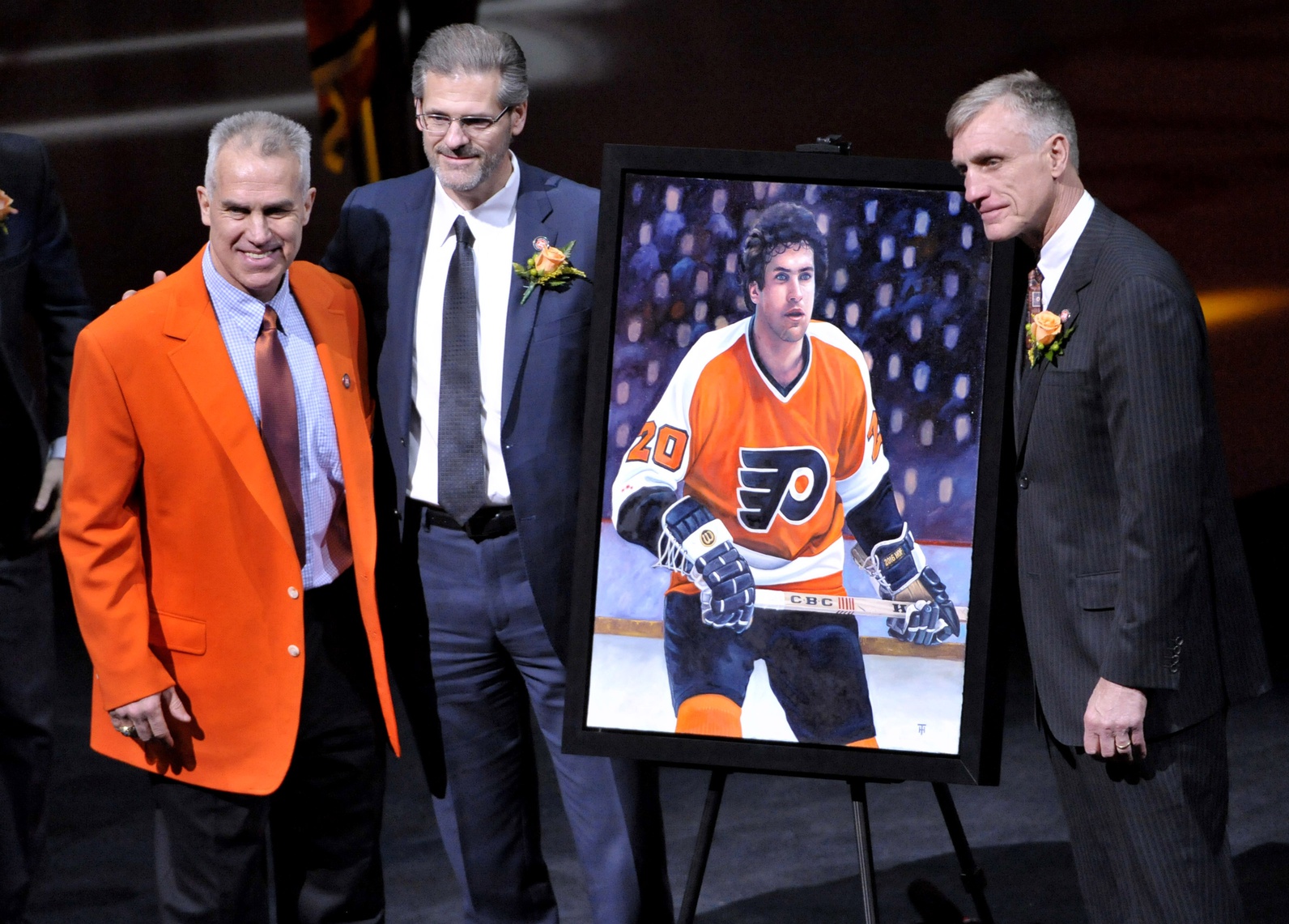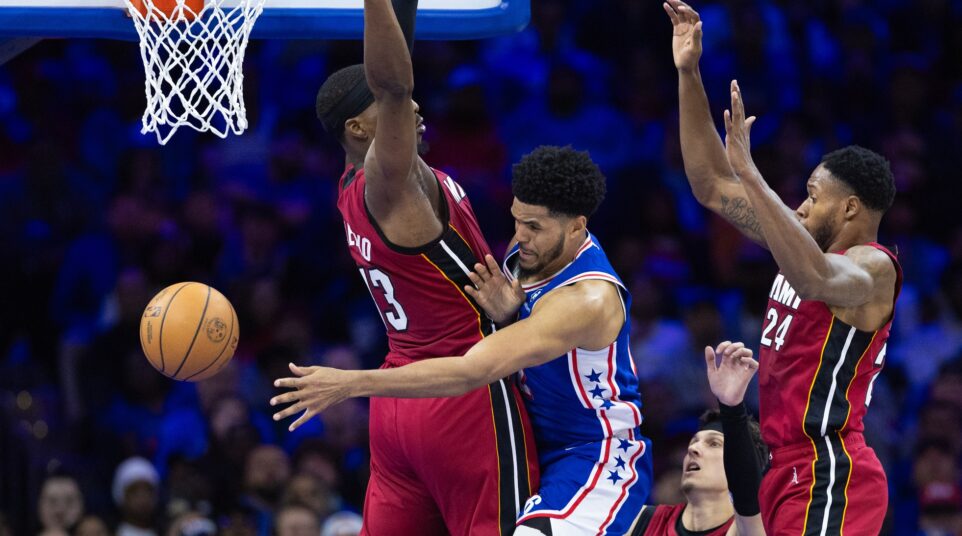
Hex, Spies, and Smaller Plates - A Final Analysis of the Flyers' firing of Ron Hextall
Work in and around professional sports long enough, and there are always going to be stories you cannot tell publicly.
It’s the nature of the beast. Keeping some stories under wraps is how you build trust. It’s how you develop relationships with sources. It’s how you become an “insider,” so to speak.
In my 18-plus years being around the Philadelphia Flyers, I have been told or personally witnessed a lot of stories that would have garnered huge, tabloid-esque headlines.
When weighing the journalistic value of these stories, it is important to determine if telling them publicly is the proper thing to do. Do they have any impact on the team? Will they potentially affect the player’s performance? Will they get somebody in trouble, and if so, do they deserve to get in trouble?
When you see incidents like the Kareem Hunt video that TMZ put out yesterday, the answer to that is yes.
When you are forced to help a player get his drunk teammate who is passed out in the hallway of a team hotel three floors below where his room is located at 3 a.m. the night before a game, in most instances, you should put that one in your back pocket.
(Yes, that happened with me and two Flyers players, many moons ago.)
As a result, in my near two decades around this team. I have a lot of stories. Some are hysterical. Some are sad. Many can never be shared in a public forum.
And then there are times when you are torn. There are times when you are given great information, but asked not to share it publicly. Or you are told you can speculate on it, but can’t actually report it – as I did with the Hextall information last Friday.
And I will tell you that since Hextall’s firing, I have been deluged with information from multiple people throughout the Flyers organization that just blew me away.
They all asked that I tread very lightly with this information, and I did so in this post that I published on Tuesday.
Since then, I’ve read a lot of stories elsewhere about what happened. I’ve read as the Flyers organization has been criticized for making this move and others – such as firing assistant coach Gord Murphy and assistant general manager Chris Pryor.
I’ve watched President Paul Holmgren get vilified for letting his “old school” mentality get in the way of Hextall’s long-term vision with this firing. I’ve heard so many people say the Flyers fired the wrong guy, that coach Dave Hakstol should have gone instead.
And then yesterday, Hextall held his own press conference, and the response was, as expected – more criticism of the organization. More cries that this was a wrong decision. More shouting that the Flyers are a mess internally and don’t know what the hell they’re doing.
I can tell you, from the years I have spent both covering and working with Holmgren, that this is a well-thought out decision and one that was made with the best interest of the Flyers organization in mind.
He also consulted at length with senior vice president Bob Clarke before finalizing this decision. It was done with the blessing of Comcast-Spectacore CEO Dave Scott and Comcast Chairman Brian Roberts.
These are not people who rush into bad business decisions. These aren’t people you can characterize as not knowing what the hell they’re doing.
Knowing what I know, this was a change that had to happen, no matter what story lines have been trotted out thus far.
There was even one column by Marcus Hayes that blamed the city – yep, the city of Philadelphia’s sports mentality – that refuses to embrace progressive thinkers, and chases them out of town. Sam Hinkie died for our sins first. Then Chip Kelly. Now Ron Hextall.
With apologies to Marcus and any other writer who offered an opinion that the firing was the wrong guy and unwarranted, I say hogwash.
Nowhere was the real story told. I gave you a little bit in that real story on Tuesday. Bill Meltzer and Jay Greenberg offered good reads on Hockeybuzz.com that pointed out that there was more than just hockey behind this decision.
Yesterday, Hextall held a press conference at a hotel across the street from the Flyers Skate Zone in Voorhees, N.J.
He didn’t have to have one. It’s rare that fired executives choose to have a press conference. Hextall said he owed it to the media and the fans and needed it for his own closure.
But maybe, it was one last effort by him to be controlling in the Flyers organization, after all, that’s where the disconnect is for Hextall.
It’s evident, even after his own press conference, that he is mostly not accepting of what was fundamentally wrong with his tenure.
If we’re being objective, from a hockey perspective, Hextall did a lot of good for the Flyers. He got them out of a sticky salary cap situation. He collected assets in young players and draft picks. He even dipped his toe in free agency with the signing of James van Riemsdyk.
But he also had a few blind spots with the roster – namely goaltending and depth at center. But, push those aside, those weren’t reason enough for a firing.
Nor was the four-plus years of stagnated production. Even if you go back and see that teams with terrible records in each of the years of Hextall’s tenure – like Buffalo, Toronto and Colorado – and one that didn’t even exist before last season in Vegas all built themselves faster than the Flyers have.
And yet, while those teams are at or near the top of the standings and the Flyers are languishing in the basement of the Eastern Conference, proving that you don’t need to drag out a rebuild as long as Hextall originally thought, that also wasn’t the reason he was fired.
These roster construction and disappointing performances certainly helped add fuel to the fire, but there was so much more. So. Much. More.
This is where things get tricky for me. I am going to do my best to provide you with enough information without divulging too much as to leave a trail of cookie crumbs to my sources. But know that there are many things that published stories to this point have not addressed.
It’s no secret by now that Hextall was a micromanager. I talked about this earlier in the week, as did others, but his level of micromanagement went far outside the job description of what a GM is tasked to do.
I’ll get into those shortly, but I want to address where things were rotten at the core on the actual hockey side.
You want to know what the biggest fallacy is about Hextall that’s been out there? That he was over-protective of Dave Hakstol as coach.
I’m here to tell you that he smothered Hakstol’s coaching efforts. That Hextall dictated a lot of decisions. That Hakstol and Hextall didn’t always see eye-to-eye on the way things needed to go with this team. A lot of times Hakstol was trying to coach in the vacuum that Hextall created, and was always the guy who had to fall on the sword for decisions that may or may not have been his own.
This is why Holmgren has said he hopes whoever the new GM is will give Hakstol “a fair shake.” That’s because Hakstol hasn’t really had one yet.
And neither have the players.
They have been under intense scrutiny by Hextall. The GM wanted to dictate their every move. He wanted to control their work day in an intensely structured manner that they weren’t used to following.
Keep in mind, professional athletes are creatures of habit. So, they are often used to structure. But they aren’t used to being told how to live their lives. When to sleep. What they can and can not eat. Heck, even what equipment they have to wear.
Hextall admitted at his personal press conference to bringing in a dietitian on board to promote better food choices, but he didn’t tell the media how much input he had in the menus. He would fume at players grabbing a slice of pizza or a few chicken wings after a game. He even changed what food was available on the plane or served in the team hotel, choosing to go more organic.
He also talked about closing off the locker room from outside influences because he’s not running a country club. And he has a point to an extent. Most of us can’t bring our friends to work with us to hang out. So, he wanted to nip that in the bud, but shutting out team employees – including former players – from popping in to offer the guys some words of encouragement, as has been the practice in the organization for many years, likely took that too far and left some bitter feelings.
Of course, that reached a head when the Flyers alumni wanted to use the locker room for an alumni game and Hextall rebuffed the idea. He did admit he wished he could have that one back – but that was really his only mea culpa when it came to his dictatorial style.
When Sean Couturier re-injured his knee in a charity game over the summer, Hextall bristled. He then made it mandatory that all players wear knee braces to protect their knees, including those without knee problems.
Some players had issues with this – and can you blame them? Players should feel comfortable in their equipment to reach peak performance. We all thought the Peter Forsberg hockey boot drama was ridiculous back in the day, but it really bugged him. If you are an elite athlete and suddenly, something changes the way you feel when you are expected to be at your best, it’s going to affect you.
Wearing knee braces unnecessarily, will do that. Hextall didn’t care. He made it an edict. And some of the players were exasperated by this.
Then there’s Gord Murphy.
Murphy was Hextall’s first hire, and that’s important. The two were former teammates. Hextall wanted Murphy to be his eyes and ears in the locker room – and he was.
The problem was, it was secretively.
Murphy was a Hextall spy. And he spied on everyone. Players. Coaches. Trainers. Equipment people. Everyone. He was a direct line to Hextall about everything going on in the locker room, training room and even some personal stuff off-ice.
It got to a point this season where a lot of the defensemen – especially the younger guys like Ivan Provorov, Travis Sanheim and Shayne Gostisbehere, either didn’t trust their coach, weren’t on the same page or both.
Thing is, Hextall had spies all over the place. He had people who would report anything and everything to him – and Hextall would clamp down on anything he didn’t like.
It was too much for the coaches and players, but at least those are the people Hextall is in charge of as GM. It might have been overbearing, but who hasn’t had a bad boss before?
However, when it crossed over to the other side of the organization, is when the control-freak really came out of his GM seat.
Without getting into specifics to protect the innocent and hard-working people on the business side of things for the Flyers, Hextall complained about certain benefits of season ticket holders. He wanted to control messaging on broadcasts, he wanted to address public analysis of his team, he wanted to control content about the team. He worried about what doors were open and which ones were closed so that people working in the building wouldn’t have the opportunity to see or hear something as they were walking by.
I can’t tell you how many of the more than half dozen people I talked to called him “a nightmare” to deal with.
And the reporting is accurate when they say he shut off many upper management types. Holmgren couldn’t get Hextall to tell him a lot of what was going on. Hextall had a very small, tight group of people he trusted with management decisions. Neither Holmgren nor Comcast-Spectacor CEO Dave Scott were in that circle of trust. Neither was Hakstol.
The only guy who was around the team every day that was in that circle was assistant GM Chris Pryor, who became an unfortunate casualty in this whole mess after 20 years with the organization because he was closest to Hextall, and Scott and Holmgren, with the blessing of Comcast Chairman Brian Roberts, needed to eradicate anyone and everyone who Hextall considered a confidante.
That brings me to Scott.
According to multiple sources, Hextall had a particular distaste for Scott. He didn’t think Scott knew much about hockey, and wasn’t shy about saying that privately. This certainly didn’t sit well with Scott, which is why Roberts was brought into the conversation.
Now, anytime you need to fire the general manager of a company, of course the big boss should be involved, but this was on another level. This was rooted in a more than just a dislike for a superior, but rather a belief that the superior shouldn’t be intimately involved because of a lack of knowledge of what he’s managing.
That was probably the greatest death knell for Hextall.
I can tell you with assurance that Hextall’s departure has brought a sigh of relief throughout the organization – from top to bottom.
And now, the healing begins.





